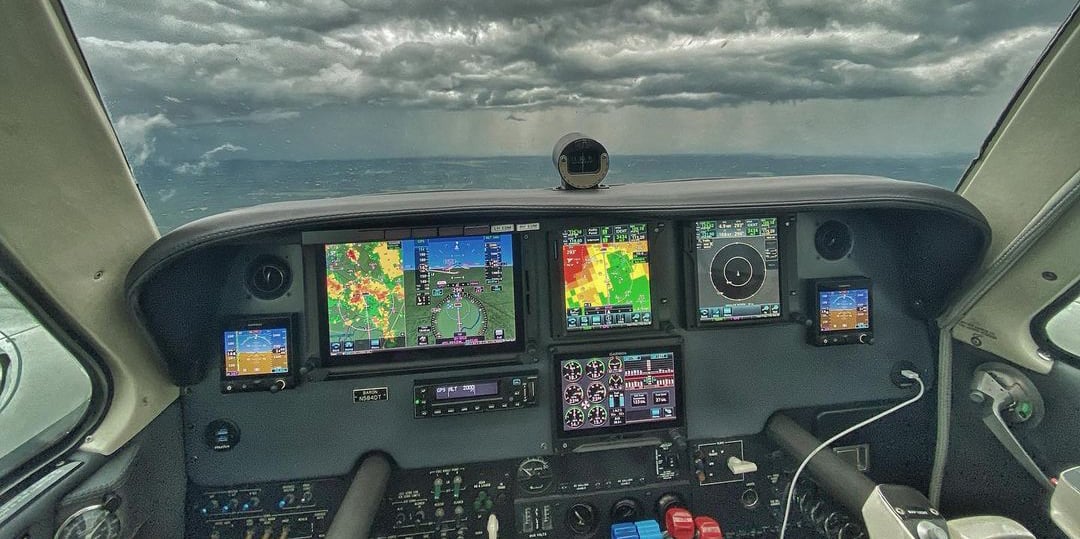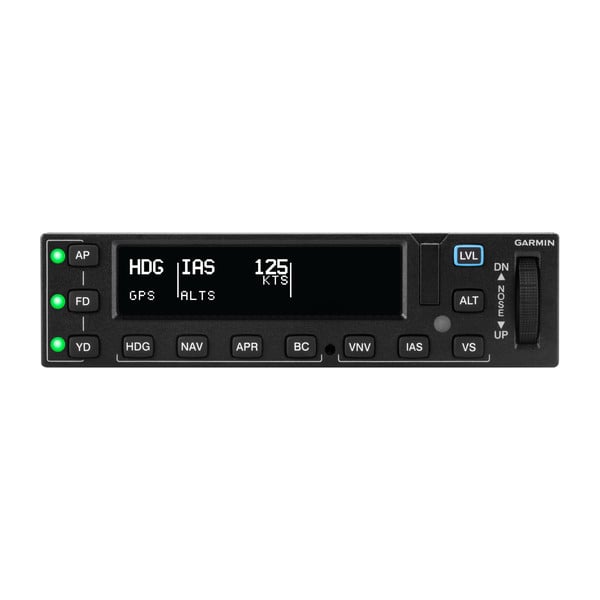
Maximizing a Light Twin with Garmin Avionics and Smart Rudder Bias
Learn how a Beechcraft Baron 58 operator relies on the latest Garmin avionics — including our GFC™ 600 autopilot with Smart Rudder Bias — to help reduce workload and increase confidence during single-pilot IFR operations.
When Marshall Chipley’s family business was looking for an airplane to help support their fleet of construction equipment, reliability and safety-enhancing features were top priorities. Their typical missions would begin from their headquarters in South Carolina, transporting replacement parts and tools throughout the region for paving, grading and earth moving machinery — sometimes twice a day and in instrument conditions. Chipley, the only pilot for the company, knew a light piston twin would offer the performance, reliability and safety features needed to accomplish their mission. Ultimately, they decided a 1996 Beechcraft Baron 58 best fit the profile.
Although a highly capable aircraft, an engine failure in a Baron or any light twin can present a safety risk of its own. With this consideration, and the higher workloads required for single-pilot IFR operations, Chipley and his family decided a Garmin-equipped cockpit would not only make the aircraft more capable but also enhance safety. The upgrade included G600 TXi, EIS TXi, a GFC 600 digital autopilot with Smart Rudder Bias, GTN™ 750 and more.
“It wasn’t just about wanting this [avionics] system to make my job easier,” Chipley said. “We also wanted this system to make this really great aircraft what it actually could be. If you get behind the airplane in a bad weather situation, you could get yourself in a bad spot. Having the situational awareness the Garmin products offered was a no-brainer.”
Precision control with the GFC 600 digital autopilot
One of the key benefits an autopilot can offer is helping reduce pilot workload, especially during flights in instrument conditions. The Garmin GFC 600 builds on that principle with a robust feature set, including underspeed and overspeed protection, a dedicated return-to-level mode button, Garmin Electronic Stability and Protection and much more.
“It doesn’t matter if I’ve got a 15-knot crosswind, [GFC 600] flies a perfect, straight glideslope and localizer all the way in … to be able to trust the system when I’m coming in to just above minimums … it gives the confidence that you can stay ahead of this airplane and make this a safe flight.”

Smart Rudder Bias: A helping hand in an engine power-loss event
A major advantage of operating a twin is the added peace of mind that comes with engine redundancy. If one engine loses power, the remaining engine could provide enough thrust to get the aircraft to the nearest airport for an emergency landing. However, an engine failure in a twin can present hazardous aerodynamic effects, forcing pilots to act quickly to maintain control of the aircraft. Chipley understood this risk, and because the Baron was equipped with the GFC 600 autopilot and yaw damper, TXi primary flight display and TXi EIS, adding Smart Rudder Bias was an easy decision.
“If I have a single engine issue on takeoff, I’ve got some help here,” Chipley said. “I know Smart Rudder Bias will be like a copilot to help me react quickly.”
Smart Rudder Bias monitors the aircraft throughout the entire flight, determines a one-engine inoperative condition, identifies which engine is affected during a failure and immediately applies control force to the rudder to help overcome yaw tendencies.
A seamlessly integrated avionics ecosystem
But having modern avionics wasn’t enough. Chipley wanted a system that was engineered to work seamlessly together, ensuring optimum performance.
“We wanted avionics that work well together. You can put things from different manufacturers together, but when something is designed in-house to work together, that’s the best it can be,” Chipley said. “It can’t be any better, because it was designed to work together. Having avionics that work effectively and efficiently was really important to us. That ecosystem didn’t exist anywhere else.”
The Garmin Flight Stream 510 wireless gateway provides this integration between the GTN 750 navigators, G600 TXi flight displays and iPads® running Garmin Pilot™.
“We use Garmin Pilot to download all of the databases, charts and supplements that we need. I go sit in the airplane 30 minutes before a flight and get everything uploaded,” Chipley said. “Then if I have a routing change from ATC, I can plug it in on my iPad or on the dash, and it’s always feeding the updated flight plan to the iPad, or from the iPad to the avionics,” Chipley said. “It’s nice to have updated information in-flight.”
Added confidence on every flight
Although the Baron took a quantum leap forward in capabilities with the Garmin upgrades, for Chipley, it’s the added confidence and sense of safety that strikes a chord.
“This isn’t just about having a nice system that makes flying fun, this is about safety,” Chipley added. “I’ve got a wife and three children — we have to make sure we come home.”
iPad is a trademark of Apple Inc., registered in the U.S. and other countries.







